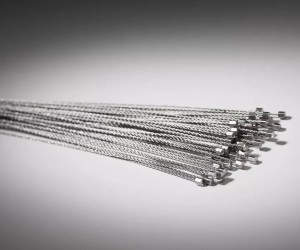 Bergen’s Safety Cable dominates: Seven unbeatable reasons why it outshines lock wire
Bergen’s Safety Cable dominates: Seven unbeatable reasons why it outshines lock wire
March 8, 2024 REDWIRE is news you can use from leading suppliers. Powered by FRASERS.
Posted by Bergen Cable Technology, Inc
Mfr Mechanical Cable, Cable Assemblies & Push-Pull Controls. Original Mfr Of Safety Cable, A Patented Fastener Reten... Read more
Subscribe
Free REDWIRE e-newsletter

Safety Cable is an exclusive Bergen product.
A renowned provider of cable products in North America and abroad, Bergen Cable is also a cable innovator. The company teamed up with General Electric in the 1980s to develop a unique brand of Safety Cable – which has since become the standard in the aerospace sector. Bergen’s Safety Cable is acclaimed throughout industry for its fast installation, low assembly costs, and high quality. And it offers notable benefits over lock wire, especially in applications that involve fastener retention.
No guesswork, less damage
The Bergen team cites the following seven reasons (among many others) why using Safety Cable works better than using lock wire for retaining fasteners:
- Better ergonomics – Safety Cable is designed to be user-friendly and to fit comfortably in every worker’s hands.
- Better access to restricted areas – Users can rotate Safety Cable noses by 360 degrees and for short lengths; this enables far easier access to tight areas.
- Higher efficiency – Bergen’s Safety Cable saves significant time by being faster and simpler to use, and this boosts production while also yielding a higher return on investment.
- Less risk of damage from foreign objects – Workers have to cut lock wire many times to remove it from an application. This creates small pieces that can damage an aircraft if not cleaned out properly. Foreign-object damage can threaten passengers and crews. But there are only two scrap pieces when Safety Cable is removed.
- Less training required – Applying lock wire correctly takes time, but any newbie can get a Safety Cable system functional in about 30 minutes.
- More safety – While lock wire has dangerous ends, Safety Cable has fused ends that pose no hazard of injury.
- No guesswork regarding details – Users can string Safety Cable through fastener holes without any need to predetermine how much to use. With lock wire, the application must start over if the amount of wire or number of twists is erroneous.
Watch this video for a demonstration of Safety Cable installation:
To learn more, contact Bergen.
Share
Posted by Bergen Cable Technology, Inc
Mfr Mechanical Cable, Cable Assemblies & Push-Pull Controls. Original Mfr Of Safety Cable, A Patented Fastener Reten... Read more
